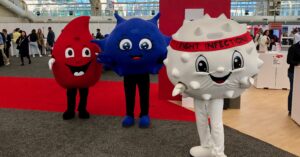Powering up CAR-T cells

Tackling T cell fitness and exhaustion will not be plain sailing, yet they will be an important focus going forward
One of the often ignored challenges in advanced cancers – regardless of whether they are hematologic malignancies or solid tumours – is the quality of the patient’s T cells.
Oftentimes these may be dysfunctional or exhausted, which means responses to any given therapy will be impacted in a negative fashion.
What if we learn more about the underlying biological processes involved – can the knowledge acquired lead to enhancements in the design of CAR-T cell products, the overall quality of the T cells, and hence improvements in outcomes?
While several companies have been active on this front, we went deeper and spoke with an academic researcher keen to leverage research findings, which may uncover novel approaches for future developments.
Rewriting T cells may prove to be an important emerging area of research to watch out for in 2024…
To continue reading our latest highlights on oncology new product development including commentary and analysis BSB subscribers can log-in or you can click to access the content.
This content is restricted to subscribers



 Sometimes I wonder when we are faced with particularly difficult challenges in oncology – there are certainly plenty of these to go around – if people give up before they start and consider certain endeavours far too difficult and thus any emergent approaches are considered tilting at windmills.
Sometimes I wonder when we are faced with particularly difficult challenges in oncology – there are certainly plenty of these to go around – if people give up before they start and consider certain endeavours far too difficult and thus any emergent approaches are considered tilting at windmills.
 This week we have been following the latest preclinical early stage clinical data coming out of the EORTC-NCI-AACR ENA Triple meeting in the beautiful city of Barcelona in Spain.
This week we have been following the latest preclinical early stage clinical data coming out of the EORTC-NCI-AACR ENA Triple meeting in the beautiful city of Barcelona in Spain.
 In immunology, there’s also a fine line between too much and too little thus finding the threshold is a very tricky thing indeed.
In immunology, there’s also a fine line between too much and too little thus finding the threshold is a very tricky thing indeed.